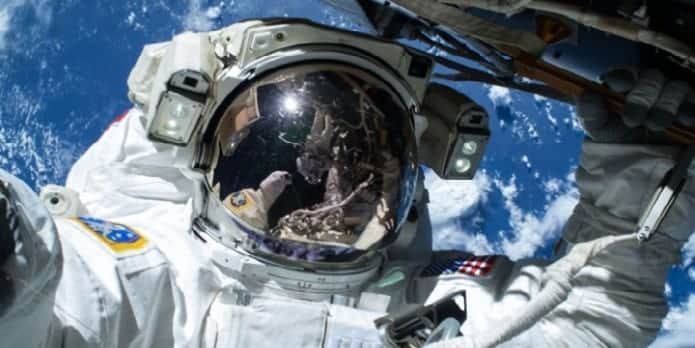Table Of Contents
First four astronauts for NASA’s commercial spaceflight with Elon Musk’s SpaceX and Boeing selected
Robert Behnken, Eric Boe, Douglas Hurley and Sunita Williams are the four astronauts chosen by NASA which says “are blazing a new trail, a trail that will one day land them in the history books”
On Thursday, NASA announced the names of four veteran astronauts who will fly its first U.S. Commercial Space Flight project with SpaceX and Boeing.
Astronauts Bob Behnken, Eric Boe, Doug Hurley and Sunita Williams aka “Suni” are the chosen ones who have previously flown on the Space Shuttle to the International Space Station (ISS) and thus have enough space flight experience. For the first time these four astronauts would board the SpaceX Dragon Crew and the Boeing CST-100 spacecrafts and travel alongside the pilots of the companies.
All the four are experienced astronauts, Behnken has flew on shuttle missions STS-123, STS-130 and has been trained as a rescue crew member, in case STS-125 experiences any problems while servicing Hubble. Boe had flew on STS-126 and STS-133. Hurley served as a pilot on STS-127 and STS-135, which was the last space shuttle mission. In the year 2006, Williams had flown on STS-116 to begin a 192 day stay in space and later returned to the ISS in 2012. Besides, she has also accumulated more than 50 hours of extra vehicular activity which is near the top of all astronauts.
In the NASA’s blog regarding the selection of astronauts, Charles Bolden, Administrator of NASA said: “These distinguished, veteran astronauts are blazing a new trail, a trail that will one day land them in the history books and Americans on the surface of Mars.”
During a press conference, Behnken said: “It’s really been the dream of all of us to participate in the test of a new vehicle, and a vehicle like a spacecraft is probably the gem, if you will, of a career.”
Hurley added: “To be part of a new test program … is extremely exciting. The challenge from a test pilot perspective is great, and I’m just looking forward to (getting) from today all the way up to the space station.”
In September 2014, Boeing and SpaceX, both were granted permission by NASA to develop and operate spacecrafts that would ferry astronauts to and fro from the International Space Station. Further, NASA also approved funds, in the amount of $6.8 billion, towards this project. Boeing had to work on creating the CTS-100 capsules and it received $4.2 billion; SpaceX- a company founded by Elon Musk- was suppose to create an updated design of its Dragon cargo spacecraft for which it received $2.6 billion.
Both the capsules would be able to carry a crew of around seven and the first flights are expected to hit in 2017. Further, as per the plans Dragon would be launched on top of SpaceX’s Falcon rocket, on the other hand, the CTS-100 would initially launch on top of ULA’s Atlas V rocket. Both these capsules would be designed in such a manner that it will be compatible with multiple rocket types which will be helpful in future launches.
The Space Shuttle had retired in 2011 and since then NASA was totally dependent on the Russian Soyuz rocket for transportation of NASA’s astronauts to the ISS. NASA had to bear the cost of more than $70 million to send just one astronaut on the Soyuz. Thus, the option of using Soyuz was not at all feasible and it was too expensive. Besides, after the Ukraine crisis, relation between United States and Russia is getting deteriorated.
With the Commercial Crew Program, NASA would not only be able to send the American astronauts back on American rockets, but also it will help the agency to get this done at much lower cost. As per SpaceX, one ride on the Dragon crew capsule would cost only $58 million, thus helping NASA save around $12 million per ride. Further, the cost might be lowered in case the company is able to reuse its Falcon 9.
For now, Boeing and SpaceX have currently signed a contract wherein each will fly six flights to the ISS. Suppose, everything falls in place then NASA would be free to continue its work on the ‘Orion spacecraft’ i.e. Orion Multi-Purpose Crew Vehicle (Orion MPCV). The Orion MPCV is under development by NASA and is intended to facilitate human exploration of asteroids and of Mars, further it can also be used as a means to retrieve or deliver, the crew or supplies from the ISS.

